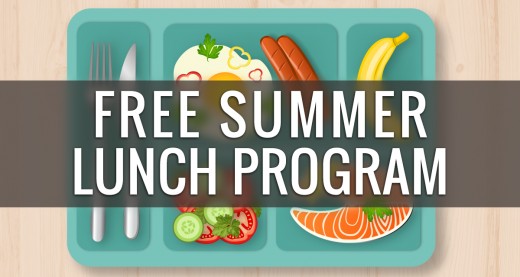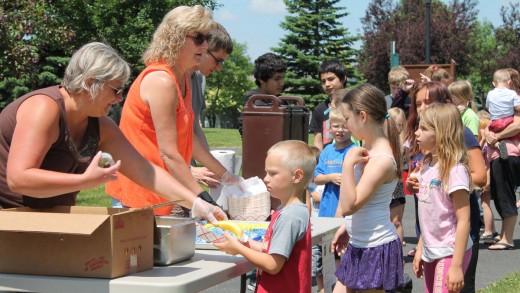Summer Lunch Program
Free Summer Lunch Program
The summer lunch or summer food program (same thing) was designed to fill the possible nutritional gaps in the diet of children who do not get school lunch because of the summer break.
The theory is that because the child is part of a low income family, there is a big chance he/she may not get a middle of the day meal, or a nutritionally balanced lunch, if the school is on summer break.
The program was not designed because of some crazy notion that "poor people don't feed their kids."
The program was designed because government aid administration understands that hard working, responsible parents who are living paycheck to paycheck, are busy trying to get the rent paid, keep the lights on, and put gas in their tanks - so the USDA is there to help.
*It is important to note that this program is entirely different from the Free and Reduced School Lunch Program.

How it Works
Participating agencies in the program will go out to "feeding sites" and administer food to children in low income neighborhoods.
Volunteers arrive at the designated spot with the free meals at a certian time of the day, and distribute boxed meals to eligible children.
The program may also be located within local Boys and Girls Clubs, Local City Parks, Daycare Centers, Neighborhood Centers, and just about any organization that caters to the welfare of children, particularly low income families.

What Kind of Food Will My Child Get?
As I mentioned earlier, the meal is prepared and boxed (or sometimes bag lunches, or lunches on trays at children's summer camp programs and the like).
Because the summer food program is a part of the United Stated Department of Agriculture (USDA) Food and Nutrition Service, the meals have to meet certain nutrition and safety guidelines.
Your child might receive a sandwich with protein, a piece of fruit, dunkable veggies, a healthy snack item, and a milk carton or juice.
How to Apply for the Summer Food Program
This is the tricky part because there is no universal "application" process.
Summer lunch feeding sites are located in low income neighborhoods in recreation centers all across America, this is a good place to start.
If you receive food stamps, your case worker or food stamp office will often give out flyers about the program each year when summer approaches.
Also, you can contact social service hotlines, like the United Way 211 Service, or your local community service hotline.
Finally, if all else fails, you can contact your local child nutrition human services agency in order to find out which outside agencies participate in the summer food program in your area, then contact the agency directly to get an application.



